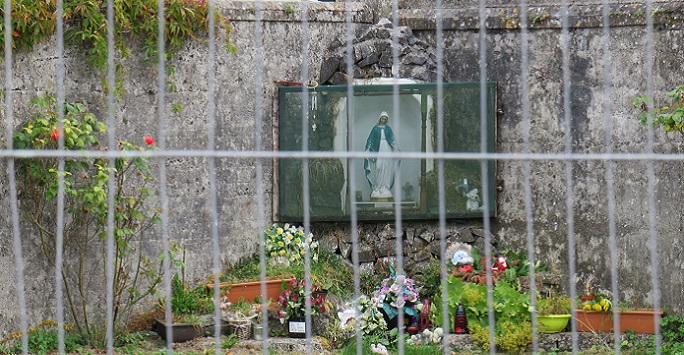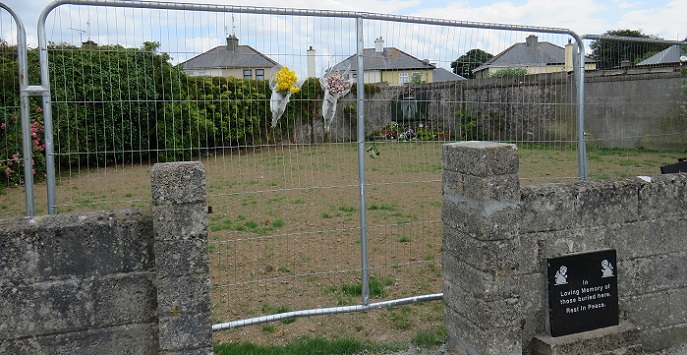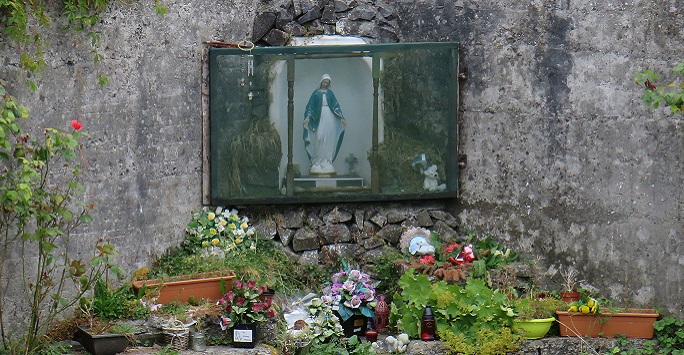Confronting a 'dark and painful reality': the Mother and Baby Homes Report
Posted on: 18 January 2021 by Lucy Simpson-Kilbane in 2021 posts

Postgraduate research student Lucy Simpson-Kilbane discusses the Mother and Baby Homes Report, Ireland, published earlier this month following a five-year inquiry.
Young, unmarried, and pregnant in 1960s-Ireland, a witness to the Mother and Baby Homes Commission recalled that she ‘was run out of the house’ when her mother discovered her ‘condition’, subsequently entering a mother and baby home ‘for her sins’. Her experience was not unique. Published earlier this month following a five-year inquiry, the Mother and Baby Homes Report detailed the experiences of approximately 56,000 unmarried mothers and 57,000 children who resided in one of fourteen Irish mother and baby homes and three county homes (former workhouses) between 1922 and 1998. Established variously by local authorities and religious congregations, and predominantly managed by religious communities, the institutions experienced a high rate of infant mortality. This was recognised as ‘probably the most disquieting feature’ of the system, as 9,000 (15%) of these children died.
The report was not the first of its kind. My PhD thesis offered a comparative analysis of the 2009 Ryan Report into Ireland’s twentieth-century industrial schools for disadvantaged children and the 2013 McAleese Report into the Magdalen laundries for supposedly deviant women. While the Ryan Report’s description of systemic abuse was widely accepted, the McAleese Report failed to acknowledge the exploitative and abusive nature of the Magdalen laundries. Unlike the McAleese Committee, the team established to examine the mother and baby homes under the chairmanship of Judge Yvonne Murphy was independent and afforded statutory powers. I was therefore eager to read the commission’s findings, optimistic that it would provide a more faithful narrative. It is as yet unclear whether such optimism was well-founded.

Memorial and flowers at site of the Bon Secours Mother and Baby Home, Galway.
Drawing on witness testimony and extensive documentary evidence, including institutional and state records, the report examined the conditions and care arrangements provided in the mother and baby homes and investigated the rate of mortality among the women and children, the circumstances surrounding their deaths, and the institutions’ post-mortem practices, including burial arrangements. The historical context of the institutions, so lacking in the earlier Ryan and McAleese Reports, is provided in depth in chapters 1-12 of the report and, at almost 3,000 pages, the Mother and Baby Homes Report is longer than both the Ryan and McAleese Reports. However, such detail is presented at the expense of clarity and accessibility, and it will likely be some time before the commission’s findings are fully appreciated. As a result, early responses such as this can only be based on a limited review of the report’s structure and principal findings.
It is vital that the inquiry process and report are subjected to greater scrutiny. Indeed, a number of the commission’s findings challenge the prevailing narrative and are worthy of further examination. I was particularly surprised, for example, by the report’s suggestion that, although mothers ‘did not have much choice’, there was little evidence that they were ‘forced’ to place their children for adoption. Arguably, this is contradicted by testimony from women who insisted that they did not sign consent forms, or that they were in fact unable to do so as they were illiterate, which is presented elsewhere in the report. The commission similarly determined that unmarried mothers were not ‘forced’ to enter such institutions but sought admission as they were rejected by their families and ‘had no alternative’. The women and children were subsequently referred to as ‘residents’ throughout the report. However, this term suggests that their stay was entirely voluntary and domestic, rather than unwanted and institutional. Furthermore, in light of the shockingly high rate of infant mortality, it was perhaps inappropriate for the report to suggest in its opening paragraphs that the institutions under investigation provided a ‘refuge’, albeit at times a ‘harsh’ one, for these women and their children.

Flowers left at site of the Bon Secours Mother and Baby Home, Galway.
While such reports are welcome, they must therefore be recognised as the beginning rather than an end of discussions. A full and critical analysis of the Mother and Baby Homes Report must form part of the ongoing process of recognition, reconciliation, and redress, as Ireland seeks to come to terms with its ‘dark and shameful’ institutional history.
Images are by Lucy Simpson-Kilbane.
Lucy Simpson-Kilbane is a PhD student at the Institute of Irish Studies. Learn all about the department here.
Keywords: University of Liverpool, Irish Studies, Mother and Baby Report, Ireland, Women, PhD researcher, Institute of Irish Studies , adoption, Liverpool.